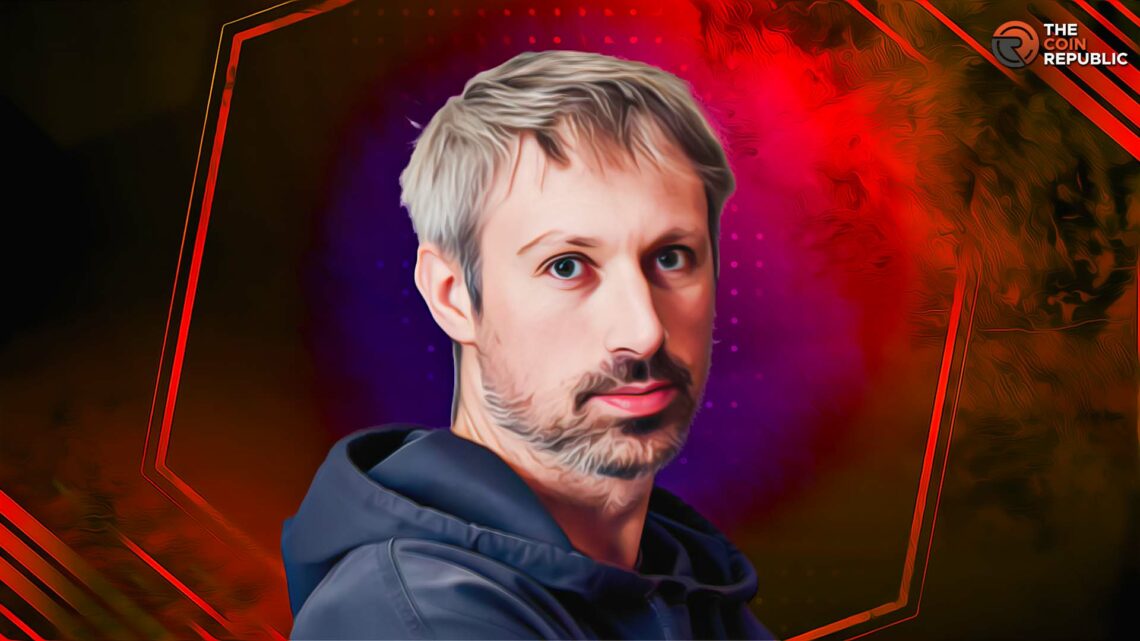- 1 At the time Wood joined the Ethereum founding team in 2013, he had 15 years of experience in coding open-source programs.
- 2 Gavin Wood founded Parity Technologies and the Web3 Foundation to provide technical and financial assistance to Web3 developers.
Who is Gavin Wood
Gavin Wood started his developer career at Frontier Development where he built cross-platform game engines. This allowed players gaming on different platforms to connect with each other. Wood developed the first C++ language Workbench in 2007. By 2011, he worked as the Technical Director at Lancaster Logic Response and helped develop real-time lights. By the time he met Vitalik Buterin in 2013, he had 15 years of experience in coding open-source software and was building OxLegal, a tech company helping lawyers utilize technology in their work process.
In the same year, Woods developed the technical framework of Ethereum and joined the founding team. He wrote the Ethereum yellow paper in 2014 and developed the Solidity programming language that enables developers to design and deploy smart contracts on the Ethereum blockchain. Wood also coded the first functional execution of the Ethereum blockchain.
The yellow paper gave technical details on the working of the Ethereum Virtual Machine (EVM) and smart contracts. EVM acts as a secure environment for running smart contracts. It prevents attacks on the network by ensuring that transactions and smart contracts are executed through a network of decentralized nodes.
In 2016 while working as the Chief Technical Officer at Ethereum, Gavin Wood co-founded Ethcore intending to build Ethereum clients. This helps the network ensure the security and accuracy of the data added to the blocks. Parity Ethereum is an Ethereum client written in Rust that allows users to run to nodes on the network while following the blockchain protocol. It has a secret store that keeps encryption keys used to decrypt externally stored documents. Portions of the key are distributed to the decentralized nodes, this ensures privacy of the document. Ethcore also designed the Parity wallet that requires more than one private key to confirm and ETH transfer.
Ethcore was renamed to Parity Technologies and expanded its focus to include building blockchains and creating software for other platforms aside Ethereum. To enable developers to build blockchains, Parity designed Substrate, a development framework that can be used to build native blockchains (like Kusama) or sidechains to existing blockchains.
Parity Technology and Polkadot
Parity Technology used substrate to develop the Polkadot blockchain. The Polkadot whitepaper was published in 2016 and the genesis block was created in 2020. The blockchain was designed to allow Layer 1 blockchains to interact with each other. Incompatible blockchains can share data by connecting to Polkadot which acts as a bridge. Parity Technology also built Kusama, a blockchain that acts as a testnet for Polkadot. Developers who want to build blockchain or decentralized applications on Polkadot can use Kusama for experimentation.
In 2019, Parity Technology collaborated with the Zcash network to release Zebra, an alternative Zcash client. This allows Rust developers to contribute to the Zcash network as well as help the entire developer community to detect and solve bugs that can affect the network’s consensus protocol.
Wood also founded the Web3 Foundation in 2017 to fund research and development of Web3 technologies.

Andrew is a blockchain developer who developed his interest in cryptocurrencies while pursuing his post-graduation major in blockchain development. He is a keen observer of details and shares his passion for writing, along with coding. His backend knowledge about blockchain helps him give a unique perspective to his writing skills, and a reliable craft at explaining the concepts such as blockchain programming, languages and token minting. He also frequently shares technical details and performance indicators of ICOs and IDOs.


 Home
Home News
News









